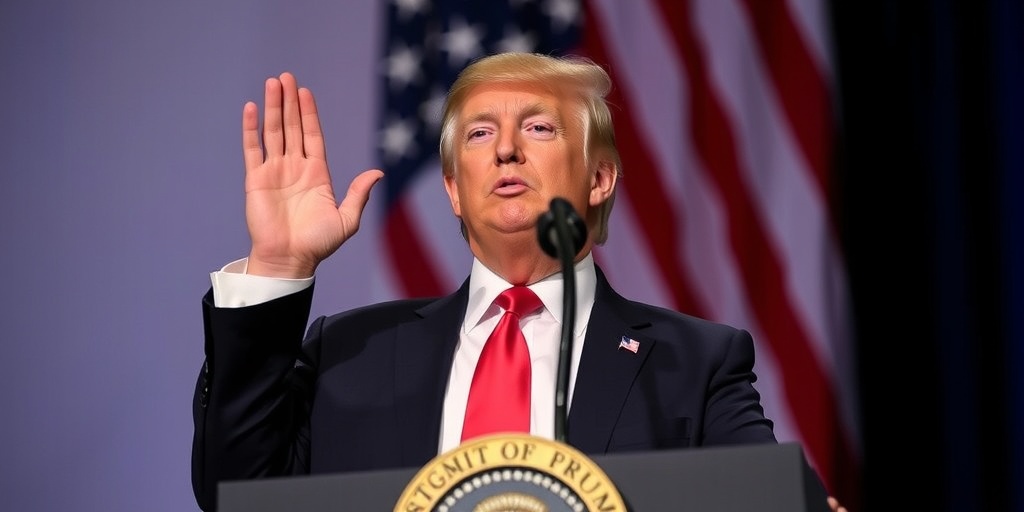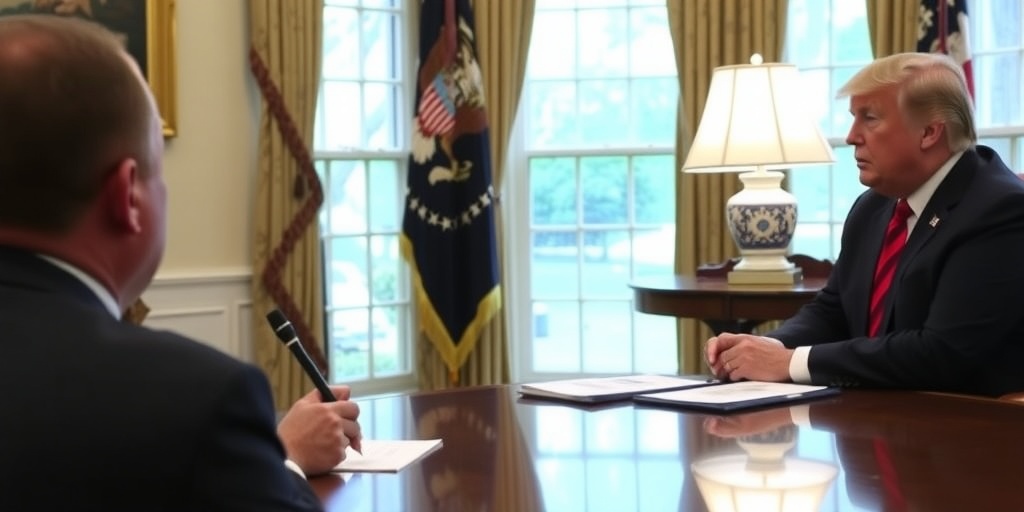Now Reading: Trump Administration May Cut Funding for Public Schools
-
01
Trump Administration May Cut Funding for Public Schools
Trump Administration May Cut Funding for Public Schools

The Trump administration has taken a decisive stand toward public education funding, threatening to withhold federal financial assistance from schools unless state education officials can demonstrate the elimination of programs deemed to be unfairly promoting diversity, equity, and inclusion. This announcement came in a memo dispatched to top education officials across the nation, marking a significant move in the administration’s ongoing campaign to reshape educational policies in alignment with its political objectives.
The memo specifically cited Title I funding, which is critical for schools with high populations of low-income students, as being at risk. State and local education leaders have been given just ten days to sign and return a certification letter to the Education Department, affirming compliance with the new directive. This directive adds a layer of urgency and tension in an already contentious education landscape, particularly given the administration’s struggle to clearly delineate which specific programs would be considered violations of its interpretation of civil rights laws.
This directive is just one of a series of policy changes by the Education Department designed to align school curricula with President Trump’s political agenda. During her confirmation hearing in February, Education Secretary Linda McMahon expressed support for the celebration of significant historical figures, such as the Rev. Dr. Martin Luther King Jr. However, her responses were less definitive when questioned about whether classes concentrating on Black history might conflict with the administration’s objectives, revealing the ambiguity that surrounds these new policies.
When pressed on this matter, McMahon remarked, “I’m not quite certain, and I’d like to look into it further.” This lack of clarity highlights the challenges educators face in navigating the new guidelines set forth by the Education Department. More recently, the Department has articulated that any evaluation of school policies and programs will depend on the individual facts and circumstances of each case.
The Education Department elaborated that programs focused on recognizing historical events and contributions, as well as promoting awareness, could remain intact as long as they do not involve racial exclusion or discrimination. The guidelines suggest a careful balancing act; schools are advised to evaluate whether any of their programs inadvertently inhibit participation from students of all races or create hostile environments for those who do engage.
Moreover, the memo indicated that the Justice Department holds the authority to pursue legal action if it finds that federal funds have been utilized in violation of civil rights laws. This stipulation adds another layer of complexity and concern for state education officials who must navigate the dual pressures of ensuring compliance with federal guidelines while maintaining inclusive educational practices.
Federal funding plays a significant role in local education systems; it constitutes about eight percent of overall school funding. However, this percentage can vary dramatically depending on the state. For instance, in Mississippi, federal sources contribute approximately 23 percent of school funding, whereas New York depends on federal contributions for merely seven percent of its funding, according to data from the Pew Research Center.
Craig Trainor, the acting assistant education secretary for civil rights, reinforced the administration’s stance in a statement, asserting that “Federal financial assistance is a privilege, not a right.” He emphasized that state education commissioners must adhere to federal anti-discrimination requirements as a condition of their acceptance of federal funds. This pronounced stance serves to remind schools of the precarious balance they must maintain between securing necessary funding and adhering to evolving federal mandates.
The ramifications of this memorandum are far-reaching, as many schools and districts grapple with the implications of these directives. Educators may now face the daunting task of reassessing their curricula and programs for compliance, all while striving to foster an inclusive environment conducive to learning. The uncertainty stemming from the administration’s ambiguous definitions and criteria raises concerns among educators about how to effectively implement necessary changes without compromising educational integrity or inclusivity.
With the educational landscape in flux, the pressure is on state and local officials to swiftly address these issues, responding to federal demands while remaining committed to the principles of diversity and inclusion that many educational institutions strive to promote. The next steps taken by the Trump administration—and the subsequent responses from educators and school administrators—will be instrumental in shaping the future of public education across the country. This escalating situation could redefine educational policy for years to come, making it critical for all stakeholders to engage in thoughtful dialogue and decision-making processes moving forward.
Stay Informed With the Latest & Most Important News
Previous Post
Next Post
-
 01New technology breakthrough has everyone talking right now
01New technology breakthrough has everyone talking right now -
 02Unbelievable life hack everyone needs to try today
02Unbelievable life hack everyone needs to try today -
 03Fascinating discovery found buried deep beneath the ocean
03Fascinating discovery found buried deep beneath the ocean -
 04Man invents genius device that solves everyday problems
04Man invents genius device that solves everyday problems -
 05Shocking discovery that changes what we know forever
05Shocking discovery that changes what we know forever -
 06Internet goes wild over celebrity’s unexpected fashion choice
06Internet goes wild over celebrity’s unexpected fashion choice -
 07Rare animal sighting stuns scientists and wildlife lovers
07Rare animal sighting stuns scientists and wildlife lovers




















